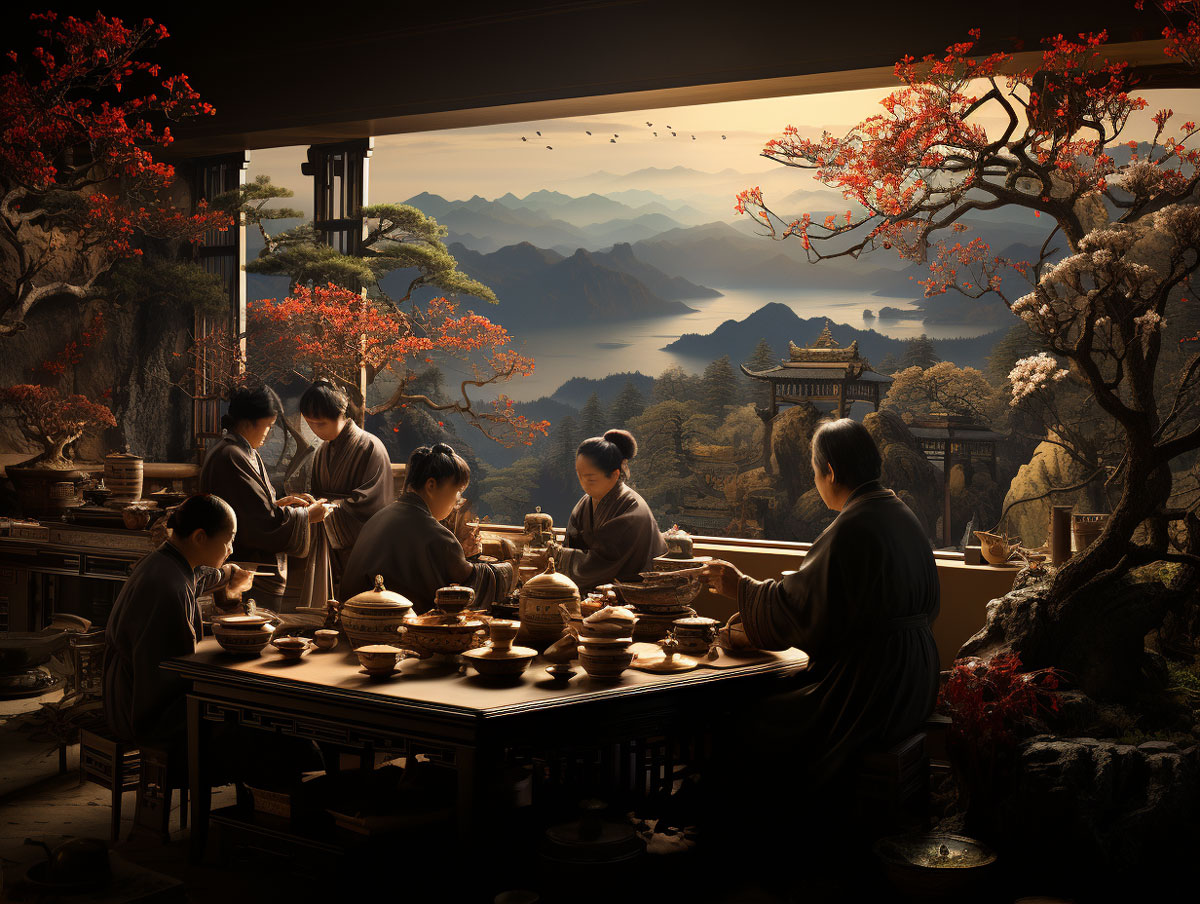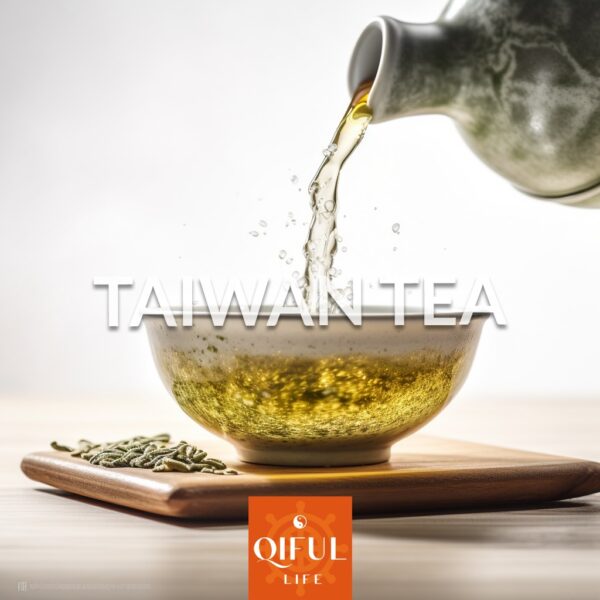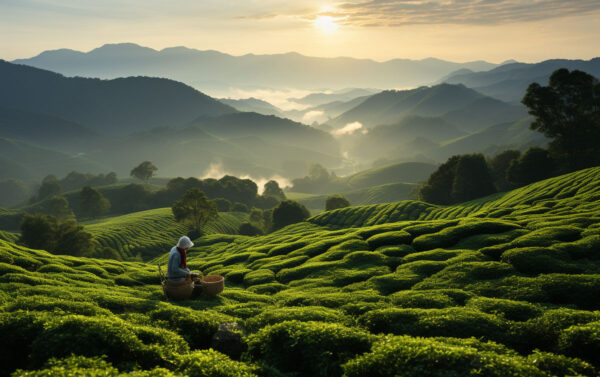Gourmet Tea » Tea Blog » Tea Information » Chinese Tea History & Culture Over Various Dynasties

Chinese Tea History & Culture Over Various Dynasties
This history of tea can at large be defined to China. Known as the birthplace of tea, introduced this beloved beverage to the world, making it one of the top three non-alcoholic beverages worldwide. Every Chinese person takes pride in their tea heritage. Today, I’ll share a concise history of Chinese tea. As a tea-loving Chinese person, you can genuinely claim to understand Chinese tea after learning these historical insights.
Development of China Tea History
Shennong Era (5,000 years ago): People drank boiled water with raw tea leaves for medicinal purposes.
Western Zhou, Eastern Zhou (3,000 years ago): Tea cultivation began, and people used tea as food.
Qin Dynasty (2,300 years ago): Tea tasting, boiling, and cooking became popular.
Han Dynasty (2,000 years ago):
- Western Han: Tea started to commercialize, with Chengdu emerging as an early tea distribution center.
- Eastern Han (1,500 years ago): People produced tea cakes for easier transportation.
Tang Dynasty (1,200 years ago): The popularity of tea grew during the Tang Dynasty, fueled by the influence of the era and the “Tea Bible” by Lu Yu. Tea competitions became trendy.
Song Dynasty (1,000 years ago): Brewing techniques improved, with a focus on water quality. Tea competitions gained more prominence.
Yuan Dynasty (700 years ago): Unpacked tea appeared, and royalty used tea cakes. Brewing tea with boiled water directly laid the foundation for loose tea popularity in the Ming Dynasty.
Ming Dynasty (600 years ago): Zhu Yuanzhang promoted loose tea and developed techniques for yellow tea, dark tea, and scented tea.
Qing Dynasty (300 years ago): Chinese tea gained global popularity, with China serving as the sole tea exporter at the time. Roasting and frying techniques produced various tea types, including Oolong, black, dark, scented, green, and white tea.
Development of China Tea Culture in Recent Times
1846 – 1886: The tea industry flourished, with tea gardens expanding and production increasing.
1886 – 1947: Chinese tea declined politically, economically, and competitively on the international tea market.
1950 – 1988: The Chinese tea industry revived, with government support promoting new tea gardens, improved varieties, scientific planting methods, and steady economic growth. China became the world’s second-largest tea producer.
Tea Utility
- Medicinal Purpose: Tea’s medicinal use dates back to the Paleolithic era. The first medical book, “The Classical Herbal Medicine,” highlights the detoxification properties of tea.
- Food Purpose: Tea evolved from being chewed raw to being cooked with rice, creating “tea porridge” or boiled and served with sauce. Even today, some people enjoy tea-infused milk, preserving the tradition of consuming tea as food.
- Drinking Purpose: Drinking tea emerged from eating tea, as people sought to savor the original flavor of tea. The practice of eating tea continues today, with some adding tea to milk. Minority groups have their traditional teas like Lei Tea and Dayou Tea.
Shift in Tea-Drinking Methods
Tang Dynasty – Tea Boiling Method: People crushed tea leaves, boiled them, and served the tea as a soup, often with spices like salt, green onions, and ginger. This method laid the foundation for the later development of the tea ceremony, emphasizing the original tea flavor.
Song Dynasty – Whisked Tea: Tea drinking reached an aesthetic pinnacle during the Song Dynasty. People intricately decorated tea cakes, ground them into fine powder, and whisked them with boiled water to create a frothy mixture. This method influenced Japan’s green tea ceremony.
Ming Dynasty – Tea Brewing Method: The tea-making process simplified during the Ming Dynasty. Loose tea gained promotion, diversifying tea varieties. This simple and enjoyable method focused on savoring the genuine flavor of tea, a tradition that continues today. Tea wares and methods also simplified, facilitating the spread of tea culture.
Summary of China’s Tea History
Chinese Tea History is a fascinating and long history. Below is a summary of the points covered for your reference.
- Origins and Development: Tea originated in China, evolving from a medicinal beverage in the Shennong Era to a globally popular drink by the Qing Dynasty.
- Cultural Evolution: Tea’s role shifted from food and medicine to a refined beverage, influencing various dynastic cultures, including the Tang, Song, and Ming dynasties.
- Tea Methods: The preparation and consumption of tea evolved from boiling and whisking to the simpler brewing techniques that became popular in the Ming Dynasty.
- Modern Impact: China’s tea industry flourished, faced decline, and later revived, establishing China as a leading global tea producer.
- Cultural Heritage: Chinese tea culture remains deeply rooted in tradition, with tea serving medical, culinary, and social purposes across centuries.






